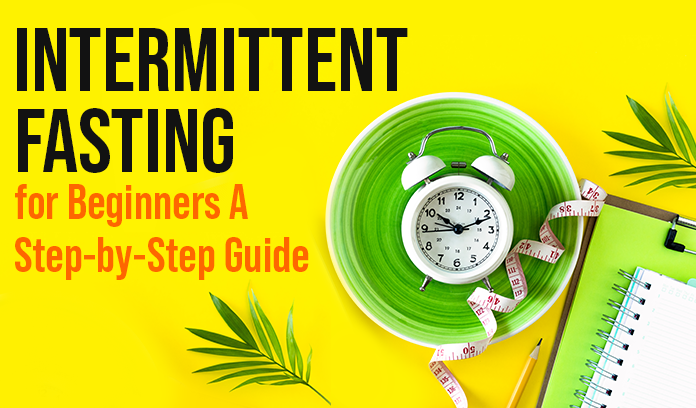Intermittent fasting (IF) has gained wide attention in recent years as a health and weight loss strategy. But what exactly is intermittent fasting, and how can beginners get started with this strategy? In this step-by-step guide, we’ll break down the basics of intermittent fasting and provide you with the tools you need to embark on this transformative journey toward better health.
What is Intermittent Fasting?
Intermittent fasting is not a diet but rather an eating pattern that cycles between series of eating and fasting. This strategy doesn’t prescribe specific foods but rather focuses on when you should eat. The idea of this practice is to limit your eating window, which can range from a few hours to a whole day, and allow your body to rest during the fasting period.
Step 1: Choose Your Fasting Schedule
There are various intermittent fasting methods, so it is important to choose the one that works best for your lifestyle and preferences. Here are a few common options:
- 16/8 Method: This method involves fasting for 16 hours and eating all your daily calories within 8 hours. For example, you might aim to eat from 12 PM. to 8 PM and fast from 8 PM to 12 PM the following day.
- 5:2 Method: In this approach, you eat normally for five days a week and consume a very low-calorie intake (around 500-600 calories) for the remaining two days.
- Eat-Stop-Eat: This method involves fasting for an entire 24 hours once or twice a week. For example, you might eat and finish dinner at 7 PM and not eat again until 7 PM the next day.
- Alternate-Day Fasting: This approach cycles between fasting days (no or very little calorie intake) and regular eating days.
Step 2: Start Slowly
If you are a beginner in intermittent fasting, it’s advisable to take it easy at first. Begin with a 12-hour fasting window and slowly increase it by an hour each day until you reach your desired fasting goal.
Step 3: Stay Hydrated
It’s important to stay hydrated while on a fasting period. Water, herbal teas, and black coffee without any sugar can be the best options. Proper hydration helps curb hunger and allows you to stay energized the rest of the fast.
Step 4: Choose Nutrient-Dense Foods
When you do eat, focus on eating nutrient-dense foods that provide essential vitamins and minerals. Lean proteins, whole grains, fruits, vegetables, and healthy fats should be the staples of your diet.
Step 5: Listen to Your Body
Intermittent fasting should not lead to extreme calorie restriction or malnutrition. Pay close attention to your body’s signals. If you feel weak, dizzy, or overly hungry, it’s okay to break your fast earlier than planned to keep you feeling better.
Step 6: Monitor Progress
Make sure to track your progress and how you feel throughout your intermittent fasting journey. Many people may find that they have increased energy levels, improved mental clarity, and even weight loss over time with this strategy.
In conclusion, with the right approach and consistency, intermittent fasting can become a valuable tool on your path to better health and a healthier lifestyle. Remember that it’s not just about weight loss but also about fostering a positive relationship with food and achieving overall well-being.

